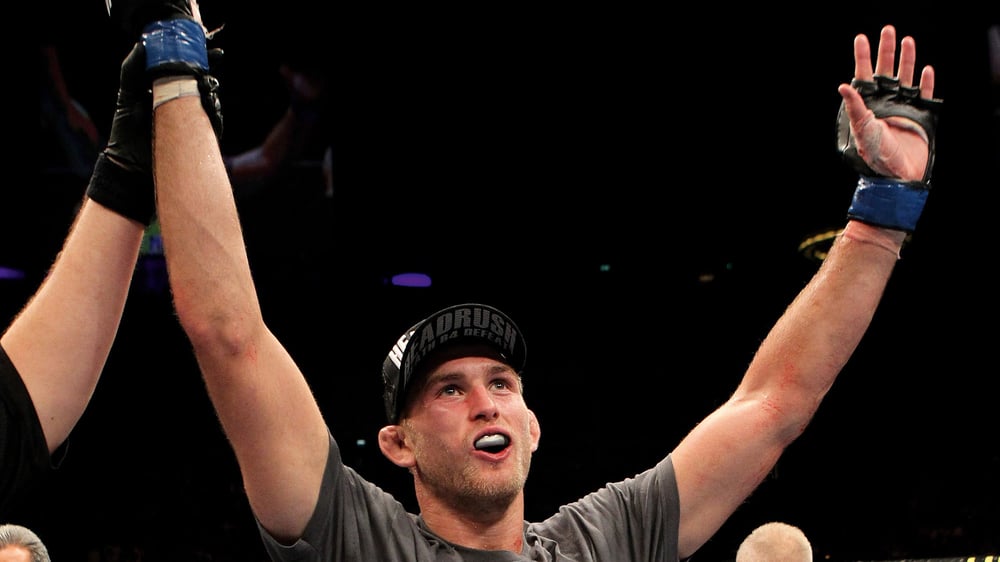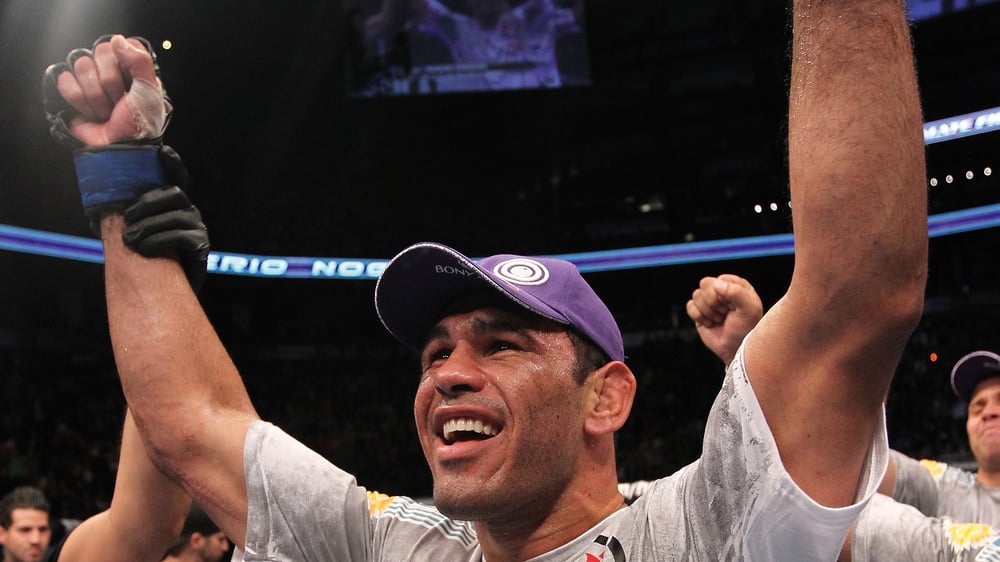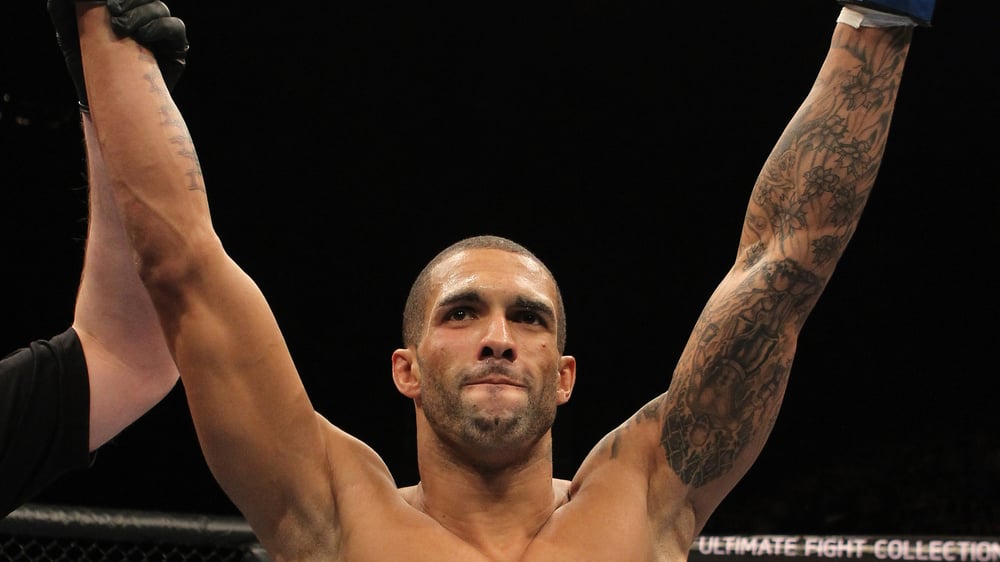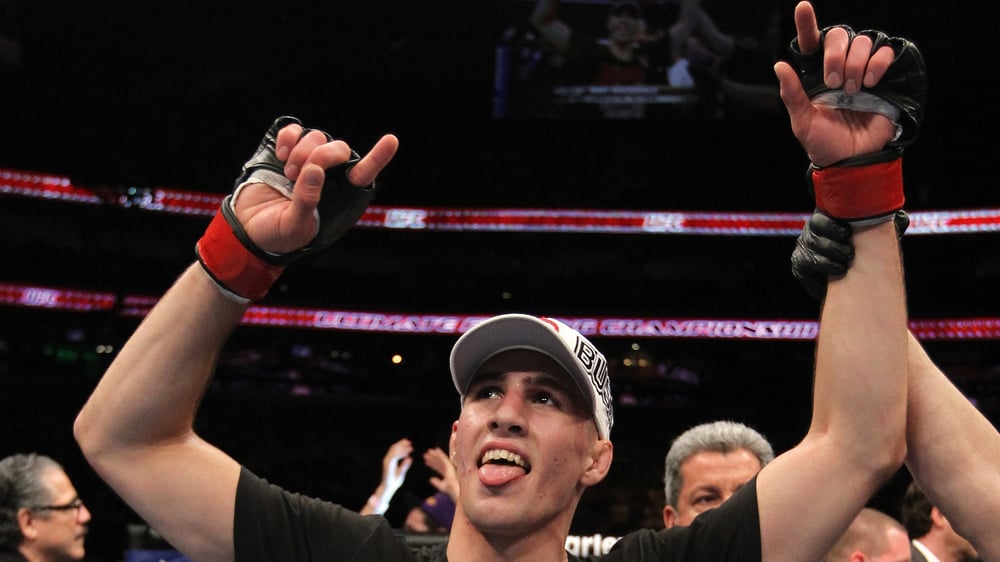
Issue 087
April 2012
FO’s experts and statisticians analyze three upcoming bouts
First, FO analyst Andrew Garvey takes a look at the state of play: what are the career implications for the combatants? Where are they coming from, and what will victory or defeat hold? Next, our technical advisor Pete Irving breaks down the athletic considerations.
UFC 145
April 21st, Atlanta, Georgia
Jon Jones vs. Rashad Evans
75:9
In the process of TKO’ing the UFC light heavyweight title away from ‘Shogun’ Rua in March last year, Jon Jones landed an avalanche of 75 strikes to Rua’s 9.
2nd
Should Evans win back the UFC light heavyweight title would become only the second man ever after Randy Couture to have two UFC light heavyweight title reigns.
2:10:30
Come fight night in Atlanta, it will have been 2 years, 10 months and 30 days since Rashad Evans lost his UFC light heavyweight title to Lyoto Machida.
$200
Evans took home a $200 check for his mixed martial arts debut, winning a one-night four-man tournament not listed on his pro record.
6:4
At six-foot-four, Jones is the tallest UFC light heavyweight champion in history, with Forrest Griffin at six-foot-three being his closest rival.
THE BIGGER PICTURE
Finally, after what seems like years of announcements and subsequent cancellations, former friends turned bitter enemies Jon Jones and Rashad Evans will (we hope) actually fight for championship glory. Fighting for the fourth time in just 13 months, the 24-year-old Jones (15-1) is one of the busiest main event-level fighters, let alone champions, in the sport. Challenger Evans (17-1-1), himself a former champion, has been nothing like as frequent an occupant of the Octagon of late. Bedeviled by injuries, both his own (knee and thumb) and his prospective opponents’ (Jones’ hand and Phil Davis’ knee), Evans has fought just four times since losing the title to Lyoto Machida way back in May 2009. While Jones, whose unstoppable march to the elite level saw him take away the ‘Fighter of the Year’ trophy at the 2011 FO World MMA Awards, will start as a heavy favorite, much will be made of their shared history as training partners. As in Jones’ title defenses against Quinton Jackson (heavy hands, power, experience) and Machida (speed and elusiveness), the challenger here presents problems for Jones that he’s never quite faced before (wrestling and power). However, the champion was thoroughly unfazed by Jackson’s predictable attacks and proved faster than Machida. All the inside knowledge Evans has from their previous training and sparring sessions may simply be canceled out by the fact Jones has similar knowledge of his own. If so, that leaves Rashad facing a taller man, with a huge reach advantage and clear edges in speed and youth. True, Evans comprehensively handled and outpointed Davis, a superb wrestler, taller, younger and with greater reach when they eventually fought on Fox in January, but Davis is nothing like as fast as Jones, and nothing like as developed and well-rounded. With wins over Chuck Liddell, Forrest Griffin, Thiago Silva, Jackson and Davis, Rashad is an excellent light heavyweight, one of the sport’s very best. But Jones, unusually in a business where a couple of good showings have people ranting about future Hall of Fame spots, really does deserve the hype. The way he’s obliterated fighters as gifted, and diverse as Machida, Jackson, and in winning the title, Mauricio ‘Shogun’ Rua is evidence of just how good he is already, and suggests he’ll only get better in the next few years. No-one is really unbeatable but, for now, no-one looks like beating Jones.
TECHNICAL BREAKDOWN
Once known as a showboater, who although spectacular in highlight reels, actually spent large portions of his bouts refusing to engage, Rashad Evans’ striking continues to improve and solidify, as he dances less and has begun to truly command the ring. Most recently against Phil Davis at UFC on Fox 2 in January, Rashad was a true ‘ring general,’ imposing the distance and forcing Davis to skirt around the edge of the Octagon.
Evans operates best backing his man to the fence, from where he accurately places his strikes, scores his takedowns and pins effectively to land his ground ‘n’ pound. However, Jon Jones’ unpredictable movement and huge stride will make him extremely difficult to cut off. Forcing him to capitulate to pressure from footwork will be no mean feat.
Rashad’s ‘go to’ takedown is the high double-leg, gripping the legs just under the butt. Rashad tilts his man either direction with excellent power. Like a lot of his best work, he often scores this takedown against the fence, meaning that, once again, he is posed with the question of how to back Jones up to the wall. But of all the ways to tackle Jones this one offers the least options for reversal, and the high hips of the tall ‘Bones’ make a good target if Rashad can get in close. However, those who engage in upper-body tie-ups with the Greco-Roman-trained Jones often find themselves rapidly airborne, as he trips, sweeps and suplexes his opponents from all manner of grips.
Jon Jones gets his opponents off balance with incredible ease, from underhooks, collar ties and even double overhooks. In terms of variety, his repertoire of throws and takedowns significantly exceeds the more conventional wrestling of Evans.
As both men are dominant top-position fighters, rarely seen on their backs, should Rashad succeed in taking Bones down, it would be fascinating to see how he plays off his back.
Rashad is notoriously undersized for the division, but normally compensates with better movement and greater speed. Jones, though, is a rare combination of size and agility, benefitting from incredible reach without suffering the usual power and balance deficits associated with his body type.
Nobody as yet has come close to solving the puzzle that ‘Bones’ Jones presents, with his wrestling flair and spectacular unorthodox striking. Expect Rashad to move constantly on the outside and rush to capture the hips. Jones, who seems to bring something new and innovative to each encounter, is anybody’s guess.

UFC on Fuel 2,
April 14th, Stockholm, Sweden
Alexander Gustafsson vs. Rogerio ‘Minotoro’ Nogueira
19
The 25-year-old Alexander Gustafsson started training in mixed martial arts in 2006 at the age of 19.
2
‘Minotoro’ Nogueira owns two Pride victories over current number-one UFC heavyweight contender Alistair Overeem: a decision in 2005 and a corner stoppage in 2006.
65%
On average, Nogueira fails to connect with 65% of his strikes, having landed 127 of 366 of his attempts in the UFC.
88%
Gustafsson has stopped 88% of attempted takedowns on him in the UFC.
28
Between his six total UFC bouts of five wins and one loss, Gustafsson has spent just over 28 competitive minutes inside the Octagon.

THE BIGGER PICTURE
Headlining the first UFC event in Sweden, this is a high-pressure fight for two highly skilled light heavyweights whose careers look to be going in opposite directions. Less than two months shy of his 36th birthday, shop-worn Pride FC veteran Rogerio ‘Minotoro’ Nogueira (20-5) faces long-limbed rising contender Alexander Gustafsson (13-1), a 25-year-old with a 5-1 UFC record. While Nogueira won his last fight impressively by first-round stoppage, his opponent was Tito Ortiz, a fighter most believe to be well past his prime. Before that, the Brazilian had lost two straight decisions – to Phil Davis at UFC Fight Night 24 and Ryan Bader at UFC 119 – and been gifted another, over the ordinary Jason Brilz at UFC 114.
The Ortiz battering aside, Nogueira hasn’t genuinely looked impressive since his 2009 UFC debut. Losing only to Davis (via first-round anaconda choke submission), Gustafsson is one of Europe’s brightest fighting prospects and is on a four-fight winning streak, finishing all but one fight inside two rounds and outclassing all his victims on his feet to set up clinical finishes. Retiring Matt Hamill and obliterating Vladimir Matyushenko in just over two minutes, Gustafsson is a versatile, fast, rangy striker who looks set for the biggest win, in the biggest fight and the biggest step up in class of his fighting career.
TECHNICAL BREAKDOWN
Swedish sprawl ‘n’ brawl artist Gustafsson debuted as recently as 2007, amassing an impressive 13-1 record, with only one of those victories having been granted by the judges in 2008. The rest of his victories have all been stoppages, largely by way of (T)KO.
With an unusually long reach at 76.5 inches, Gustafsson carries his hands low, feeling out with the jab and then throwing the right at all angles, working body and head. He makes great use of the right uppercut. He favors his left high kick, either leading with it at range, or using it to finish a combination.
‘The Mauler’ consistently lives up to his moniker, swarming on a downed opponent and hammering away. Gustafsson tends to maintain his posture, even after throwing by the guard, preferring to keep his torso upright and drop his trademark hammer fists, chopping down with the unpadded side of the hand, rather than pin his opponent chest to chest.
Nogueira is of course a hugely skilled Brazilian jiu-jitsu black belt, and an accomplished amateur boxer. His weakness lies in the middle, leading to his recent spate of decision defeats to top wrestlers. His takedowns lack the explosive quality of his wrestling-trained counterparts in the light heavyweight division, and it is not uncommon to see him reversed when attempting singles and trips from the bodylock, often being happy to look for the sweep from half guard. A dangerous game to play with today’s judging system weighted towards top control.

UFC 145,
April 21st, Atlanta, Georgia
Che Mills vs. Rory MacDonald
1st
Despite a 19-fight, nine-year pro career, his bout against Rory MacDonald will mark the first time Che Mills has fought in North America.
3rd
According to UFC.com, Rory MacDonald is the third youngest fighter on the UFC roster.
2
At only 22 years of age MacDonald’s promising two-year UFC career has already been tested by two injuries which have forced him to pull out of two bouts.
12
In the UFC, MacDonald has finished 12 of the 21 takedowns he has attempted.
75%
Three of Mills’ four defeats, or 75%, have come due to submission: two armbars and an americana.

THE BIGGER PICTURE
Entering his ninth year as a professional fighter, Che Mills (14-4-0-1) debuted on the British scene when prodigiously gifted Canadian welterweight Rory MacDonald (12-1) was 14 years old. Coming off an impressive UFC debut where he annihilated Chris Cope in 40 seconds, thanks to a knockout via knees, Mills is a quality fighter: tough and technically astute. A former Cage Rage champion, Mills also holds two stoppage wins over inconsistent wrecking machine Marius Zaromskis.
The 22-year-old MacDonald, however, is already a better fighter than anyone Mills has faced before. With a 3-1 UFC record – and he’d be 4-0 if he’d lasted another seven seconds against Carlos Condit – MacDonald holds a physically dominant decision win over Nate Diaz (in the fight that sent Diaz back down to lightweight) and most recently, a vicious first-round ground ‘n’ pounding of tough veteran Mike Pyle at UFC 133. Often hyped as the second coming of teammate and Canadian fighting hero Georges St Pierre, MacDonald is significantly better and has achieved far more than GSP had at the same age, though he did make his professional debut at just 16. Mills is a good fighter. MacDonald might well be on the way to being an exceptional one.
TECHNICAL BREAKDOWN
Mills is tall and maintains an upright stance, making an attractive target for the shot. He compensates with fast reactions, carrying his hands quite low and dropping in his underhook or stuffing the head when the takedown attempts come. It is rare to see Mills shoot in, more commonly his matches hit the floor thanks to the opponent’s efforts and Mills gains the top position with a sweep or reversal. Expect MacDonald to be the one initiating the takedown, especially if Mills elects to kick. Tending not to make the most of his reach and instead coming in close to get his work off, it is common to see Mills engage and rapidly find himself in a clinch – often against the fence. And when he establishes the plum clinch he gets results with the knee. Mills is not the fastest of welterweights, but does an excellent job of imposing his pace on the fight, bringing the opponent to his tempo.
A prodigious talent, MacDonald is a true mixed martial artist, giving equal favor to his striking, wrestling and ground skills, evidenced in his even split of (T)KO and submission victories, all of which are by varied means. Moreover his striking, grappling and takedown style is hard to define in terms of a root art, helping to make him a tough proposition.
...









